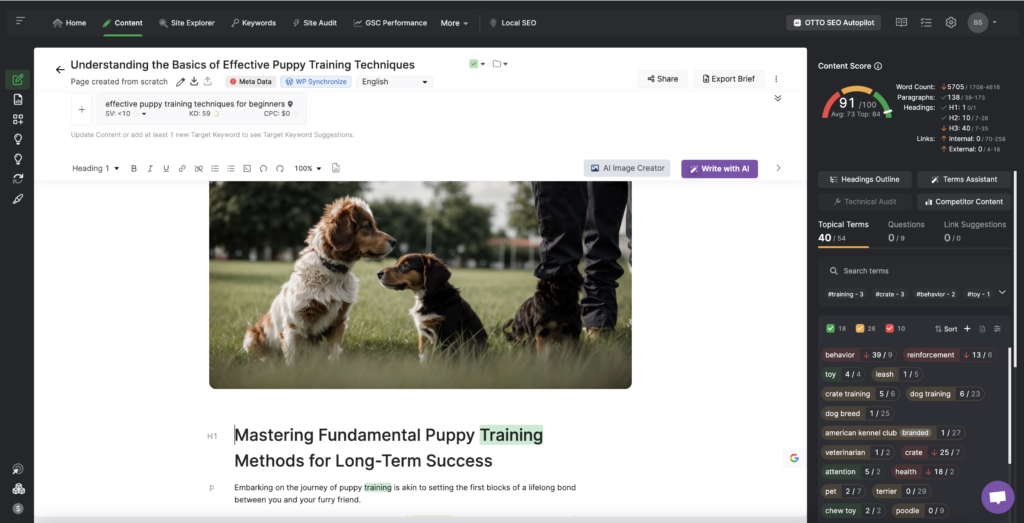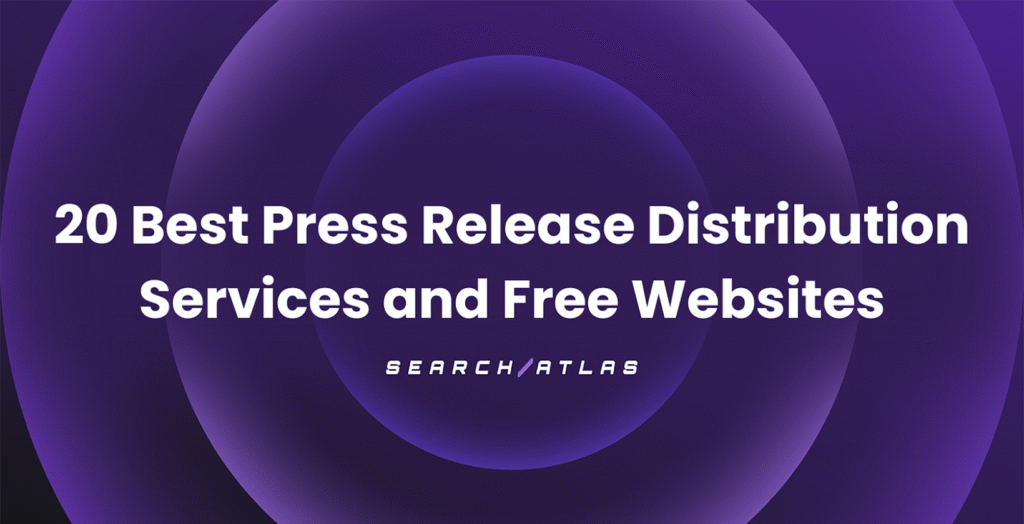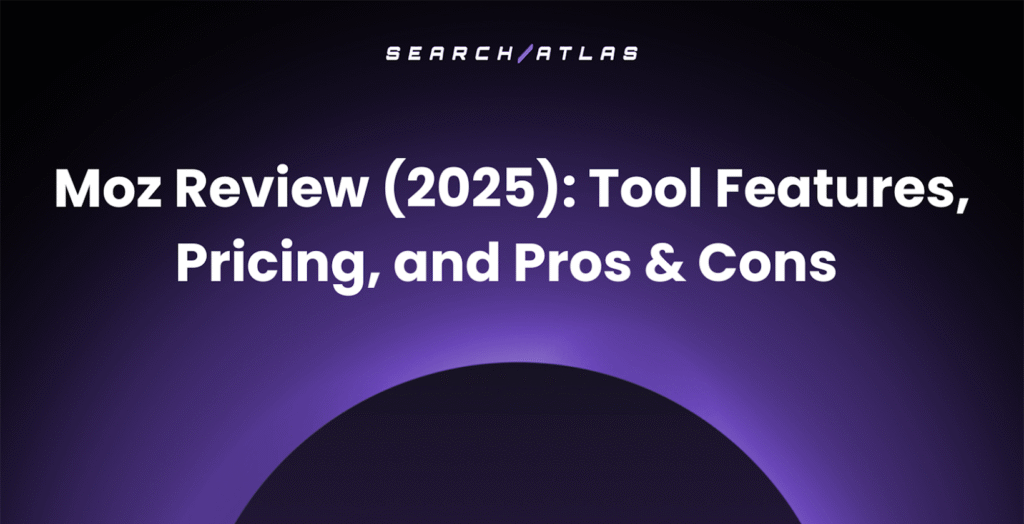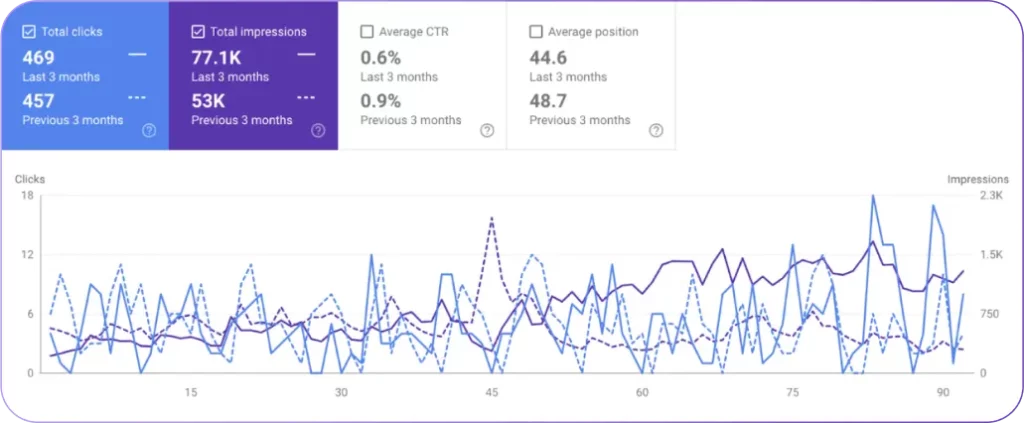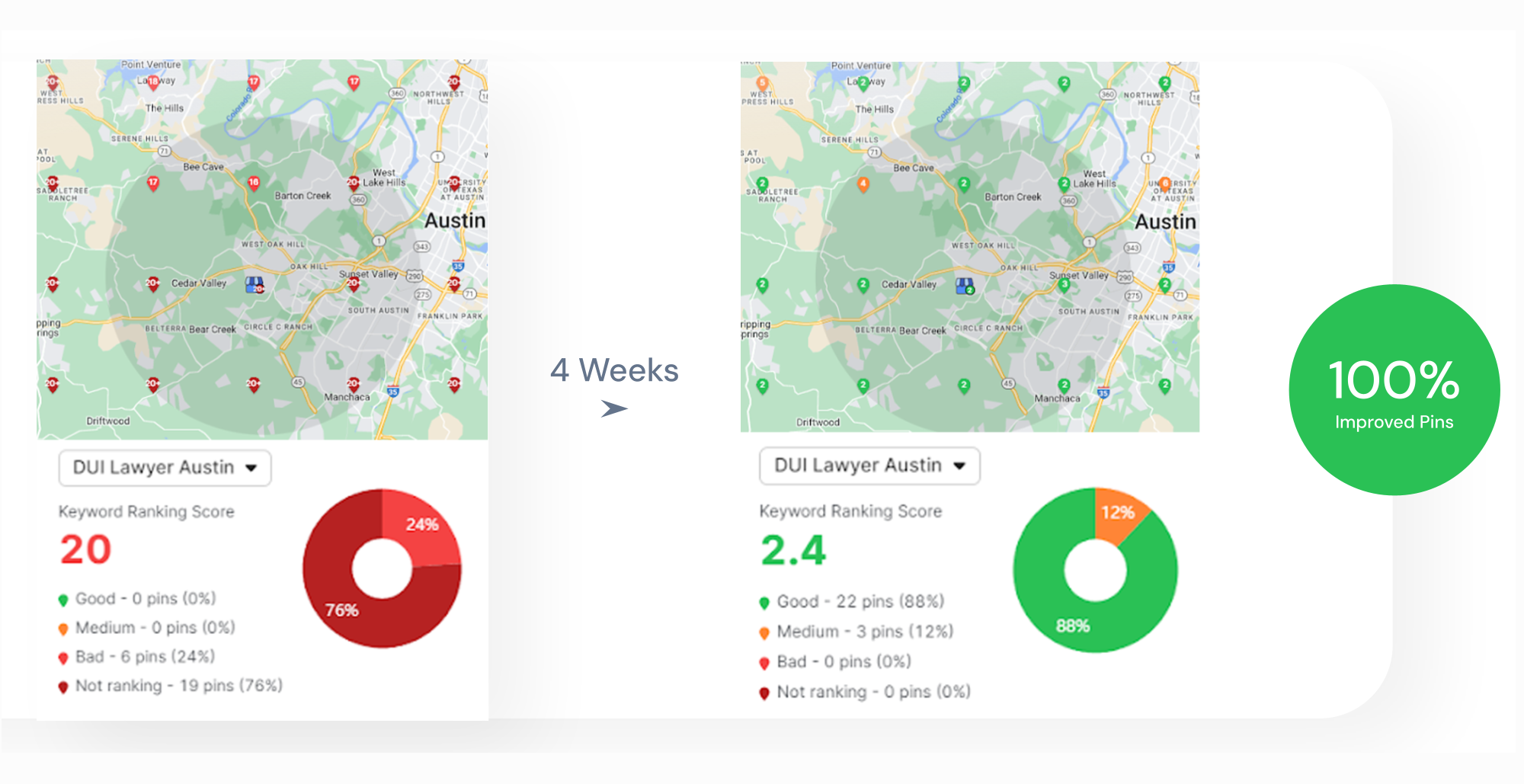Keyword density refers to how often a target phrase appears in your content. A few algorithm updates ago, SEOs relied on it heavily, sometimes to the point of stuffing articles with keywords and making them hard to read.
Thankfully, search engines have gotten smarter. 😌
They now focus more on context and intent rather than keyword repetition. This means keyword density isn’t as critical as it once was, but it’s not completely irrelevant either. It can still help signal relevance, and new on-page audit tools can spot how well you’re doing this.
So let’s break down why keyword density still matters (just a little), how to calculate it, and how to strike the right balance between SEO and readability.
What Is Keyword Density?
Keyword density is the ratio of keywords your article contains relative to its length. The 1-2% percentage used to be considered ideal, although it will not apply to all texts, and is not something you should follow blindly.
For example, scientific or technical texts can have a higher keyword density, which can still be considered appropriate.
Instead, the percentage can serve as a guideline when creating keyword documents and instructions for your AI assistant or content writers. However, it should never stand in the way of natural, relevant content.
How to Measure Keyword Density
The simplest keyword density formula is percentage-based.
Let’s say your main keyword (the one you want to rank for) is “digital marketing”, and you have a 1,000-word article in which the keyword appears 15 times.
This means the keyword density in your article is 1.5%.
What Is the Purpose of Keyword Density?
When you express keyword density as a percentage, you can see if the density in a given piece of text is too high or too low.
While it hasn’t been a crucial ranking factor for a while, there are reasons we still observe keyword density in SEO.
These include:
- Signaling content relevance: While it’s not the only factor, search engines also look at keywords to determine whether the page fits a search query.
- Avoiding penalties: Stuffing your content with the focus keyword can get you penalized, as it may seem like you’re trying to (poorly) manipulate the search engine.
- Improving rankings: If you use keywords strategically, you can improve your content in the eyes of readers, as well as Google bots.

Can You Still Rank Without a Certain Keyword Density?
Yes, you can. While you shouldn’t neglect keywords entirely, the algorithm works a bit differently nowadays.
In 2025, Google uses semantic search to understand how well you’re responding to a query. Its engine analyzes not just exact match keywords, but also entities, phrases, and the relationships between them to understand context.
The semantic search process goes well beyond keyword analysis and looks at the search intent, tone, sentiment, and other elements to find the most relevant response to a search query.
You still need to use keywords but ensure they fit naturally within the right context while thoroughly covering the topic.
In other words, it’s much more important to focus on satisfying search intent and giving your readers what they need. Keywords should be a natural part of the text, not an end in themselves.
Does Density Only Matter for the Focus Keyword?
No. Keyword frequency is important for all keywords in the text, including the focus keyword, secondary keywords, Natural Language Processing (NLP), related terms, and topical terms.
The search engine bots will look at the entire page and all words on it, try to decipher the context and meaning of your article, and then decide what search query your page works for.
5 Ways to Achieve the Ideal Keyword Density
Finding the right balance between the ideal keyword density and user-friendliness depends on how you use the following strategies: relevance, keyword placement, moderation, and supporting keyword use. If you respect these rules and focus on providing value to your readers, you will likely naturally reach an ideal density between 1% and 2%.
1. Focus on Relevance First to Create Value for Your Readers
SEO is not an exact science, and relevance can feel subjective.
To do it right, you need to mind these four concepts:
- Focus terms: Choose primary and secondary keywords relevant to your target audience. For example, if the article is aimed at a general audience, set a focus keyword they are likely to search for.
- Niche: Ensure your keywords resonate with your niche’s unique terminology and trends. Use synonyms to explain terminology and include concepts related to the topic.
- Competition: Review top-ranking content to learn how your competitors use keywords. There’s no shame in copying the keywords and incorporating them into your content.
- Search intent: Match your keyword usage to the intent behind search queries. Intent can be informational, transactional, commercial, or navigational.
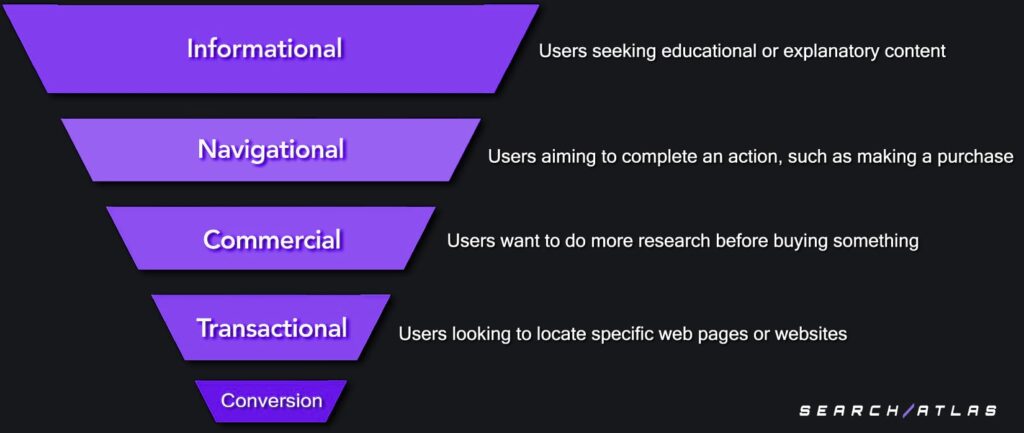
2. Mind Your Keyword Placement to Keep Content Natural
Most people skim the page before deciding whether they want to stay and read its content. If you use keywords strategically, such as in headings, you can help find the information they’re looking for more quickly.
At the same time, keyword placement matters for your SEO. It signals that your content covers the topic and that it’s organized and easy to read.
Include keywords in:
- Titles and meta descriptions: This will help you clearly signal your content’s purpose to search engines. Also, it’s the first thing people see when looking at your page on the SERP, so it may improve your click-through rate.
- Headings (H1, H2, H3): Headings organize content for better readability. Use the main keyword in the title, and use supporting keywords in the subheadings (as long as they fit there naturally).
- First 100 words: This is a relatively old rule, but it still reinforces the topic for search engines. It also happens naturally when introducing a topic.
- Alt text: Use keywords in image descriptions for accessibility and SEO. Make sure that they’re still as relevant as possible.
- Anchor text: Anchor text is the text you click on to follow a link. Ensure internal links use keywords naturally and that they properly describe the topic of the target article.
In Search Atlas Content Genius, you can automatically create optimized articles and outlines, with keywords in all the right places.
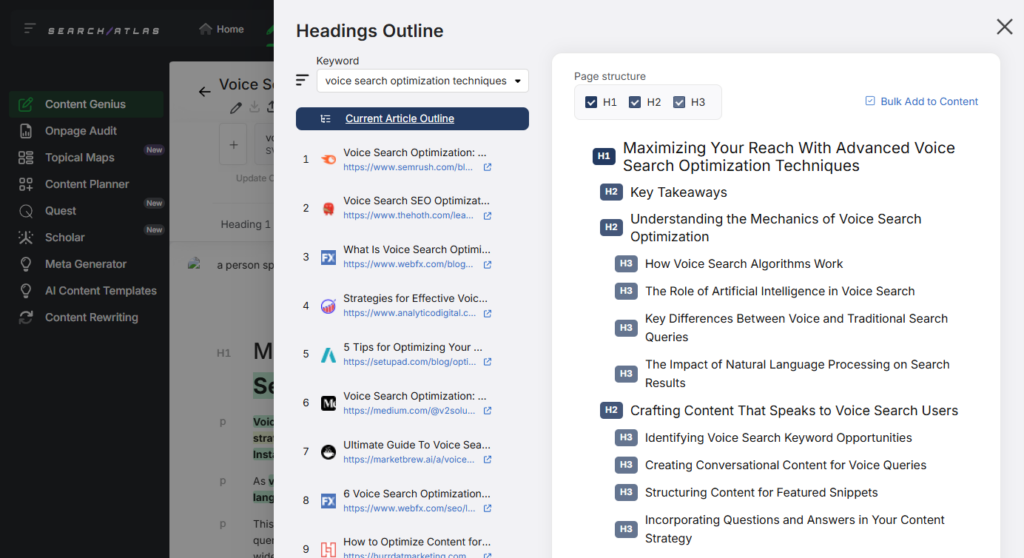
3. Avoid Keyword Stuffing to Improve Readability
The overuse of keywords is a remnant from the dark age of SEO, where the tactic was so abused it made content repetitive, unnatural, and unreadable. 😣
Here’s an extreme example:
“Our digital marketing agency offers the best digital marketing services. If you need digital marketing, our digital marketing agency provides top-notch digital marketing for businesses seeking digital marketing solutions. Choose our digital marketing agency for all your digital marketing needs.”
This is not only painful to read if you’re a human. Search robots can also recognize keyword stuffing and penalize your website.
Also, even if they don’t at first, bored readers will leave your page and increase your bounce rate, which again, brings down your rankings.
Google is now smarter and looks at much more than keyword density. It looks at content quality, the freshness and quality of information, and other factors that mainly focus on the value you bring to readers.
With our Scholar tool, you can not only evaluate your own content for these metrics but also compare it to your competitors to see whether you need to fix something.
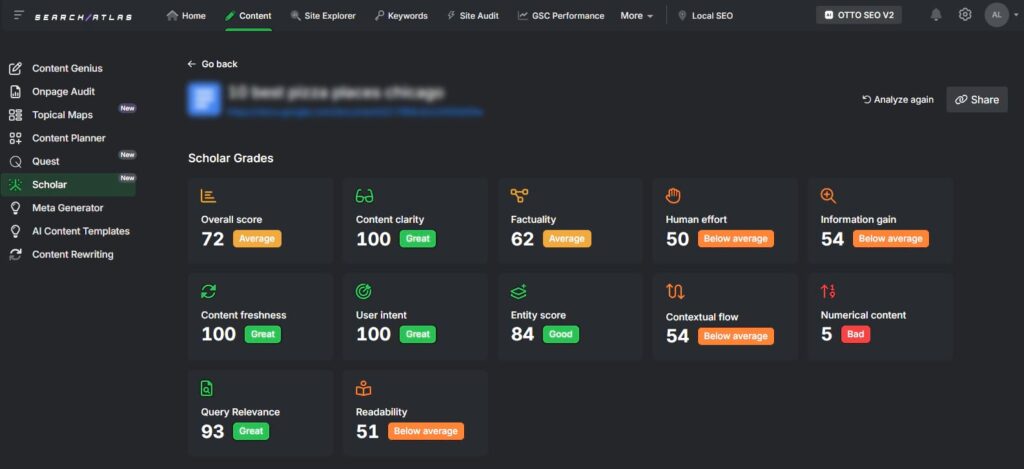
4. Use Topical, NLP, and Related Terms for Relevance and Visibility
Topical terms in SEO are keywords and phrases related to a specific subject. Search engines use them to understand content depth and relevance. For example, in a “running shoes” article, topical terms include “cushioning,” “arch support,” and “trail running.” Covering these terms helps search engines see your content as authoritative and boosts rankings.
But modern search engines go beyond basic topical relevance. They use Natural Language Processing to analyze content in a way that mimics human understanding.
NLP terms include:
- Entities such as “Nike Pegasus” or “Brooks Ghost,” which help search engines identify specific brands and products.
- Intent-driven phrases like “best budget running shoes” or “lightweight running sneakers,” that indicate what users are looking for.
- Sentiment indicators such as “highly durable” or “prone to wear,” which help search engines assess the tone and context of the content.
Along with topical and NLP terms, related terms play a key role in SEO. These are synonyms, closely linked concepts, and natural variations of your target keyword.
For example, in the same article about running shoes, related terms could include “footwear for runners,” “jogging sneakers,” and “marathon training shoes.” Search engines recognize these variations, which helps your content rank for a wider range of searches.
To optimize for topical, NLP, and related terms:
- Use Keyword Research Tools: The Keyword Magic Tool helps identify important terms, including high-CPC and PPC-driving keywords.
- Cover Key Entities and Phrases: Mention well-known brands, locations, and product names naturally to improve relevance.
- Optimize for Search Intent: Include question-based and comparison terms to align with user queries.
- Incorporate Natural Variations: Use synonyms and related phrases to make content more readable and rank for different keyword variations.
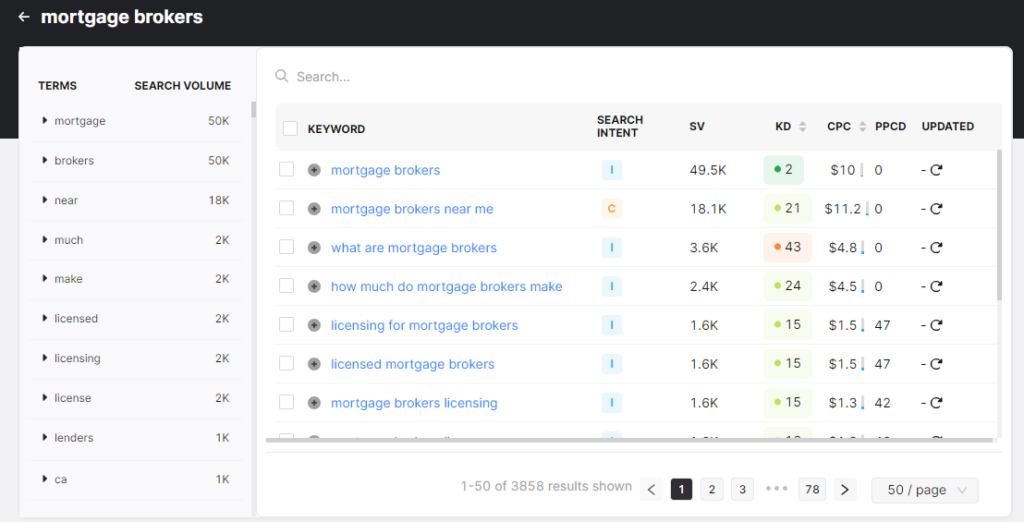
5. Use Long-Tail Keywords to Rank More Easily
Long-tail keywords are specific, multi-word phrases that often target niche audiences. For example, if you’re writing a blog on dog treats, it will be difficult to rank for “dog treat recipe”, as the keyword includes several search intent parameters, and is highly popular at the same time.
Instead, you can choose specific, long-tail keywords such as “dog treat recipe peanut butter and pumpkin” or “recipe for dog cookies with pumpkin”.
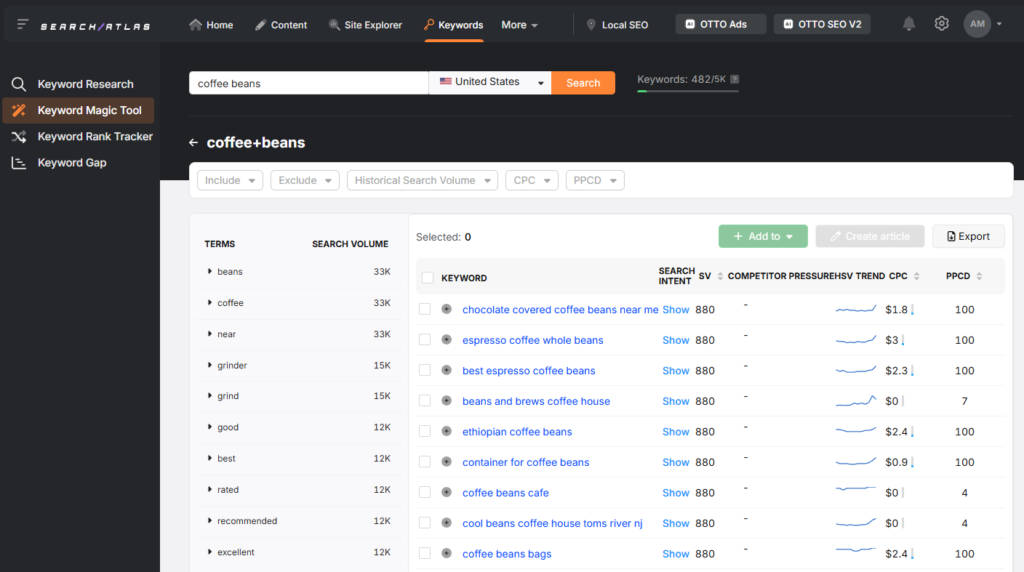
As you can see, these keywords have less pressure from competition, but are still popular among searchers.
So when you target a long-tail keyword, it will be easier to achieve three things:
- Lower Competition: Long-tail keywords typically face less competition, making it easier to rank for them.
- Higher Conversion Rates: Because they match precise user intent, these keywords often lead to better engagement and higher conversions.
- Enhanced Targeting: Long-tail keywords help you attract users searching for highly specific information. By using them, you can get more qualified leads, interested in the exact information or product you’re covering.
5 Types of SEO Tools to Perfect Your Keyword Density
With the growing power of AI, SEO tools are becoming more efficient and precise. With modern content editors, keyword research tools, and topic cluster creators, you can improve your keyword density, relevance, and overall keyword strategy.
1. Content Editors and Assistants

A content editor is a tool that enables you to view your article’s SEO score while you write. As the fastest-growing SEO tool company, we created an AI editor that lets you optimize your article without ever leaving the dashboard.
Here’s what it provides:
- Automation: Automatically analyze your competitor’s pages and determine suitable focus terms, subtopics, and keyword density goals.
- Internal Linking Opportunities: You can find linking opportunities directly.
- Competitor Analysis: This tool lets you find competitors who also use a given term. You also get insights into competitor headings, which can save you tons of effort when creating content outlines.
- Keyword Density Checker: You get to see the optimal keyword frequency in each text. So if you want to optimize existing articles, just copy them into the Search Atlas editor.
- Terms Assistant: This part of the Editor gives you AI suggestions on ways to insert terms into your text. You can also add new topic terms as you write, and optimize for them, too.
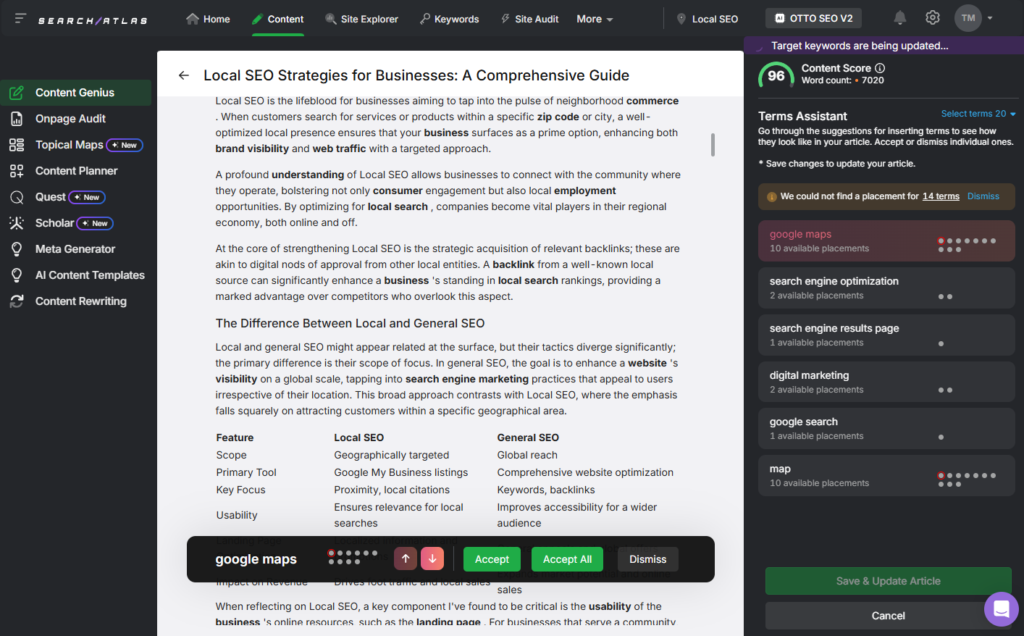
2. Content Planning and Overview Tools
Search engines do not only analyze individual pages. They also look at how well they fit into the niche your website is trying to cover, and how well they’re linked together.
So remember, instead of optimizing for keyword density, optimize for covering a topic in your niche. You can achieve this through topical maps.
These maps give you keyword clusters, long-tail keyword lists, and title suggestions, all organized around a single topic.
A topical map showing categories related to the keyword “outdoor gear,” including Tents and Shelter, Sleeping Bags, Backpacking Stoves, and more, with connected supporting article ideas to boost your PPC campaigns this August.
At the same time, planning tools can also help you avoid keyword cannibalization. Your pages will rank for many different keywords and won’t usually interfere with one another.
However, sometimes, you have the same search intent and the same primary keyword, and your traffic gets split between several pages.
This will be much easier to avoid if you have a solid content plan, especially if you work for multiple clients with a lot of pages. With modern tools, creating one doesn’t take long, as you start with a seed keyword and get automated plans in minutes.

3. Keyword and Competition Research Tools
So instead of fighting for the high KD keywords with hundreds of competitors, it’s much easier to target easier terms. You should be looking for unique keywords—content opportunities that your competitors still haven’t explored.
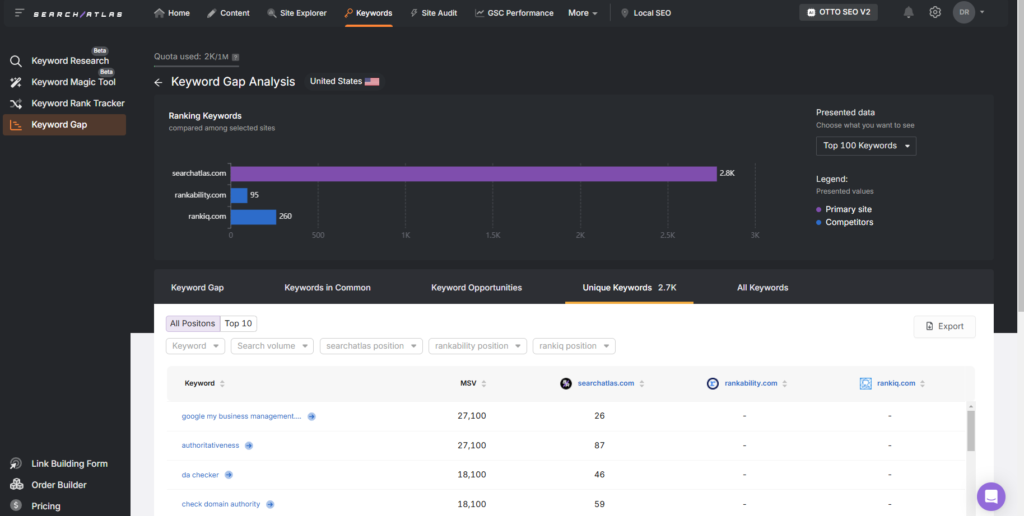
Keyword gap analysis can also show you what keywords your competitors are ranking for (but you’re not), and the opportunities for new content. This way, you can focus on relevance with data to back your strategy, and forget density or over-optimization.
4. On-Page Audit Tools
If you’re still worried about your old articles (or your client’s content from a previous agency) you can review it automatically and see how it fits into modern SEO standards.
Luckily, we now have AI to see if anything is over- or under-optimized. It can flag if keyword density is suspiciously high in a post, or if there are other issues with headings, metadata, and other on-page components.

With modern tools, you can also audit for topical terms, see if there are any changes you have to make, or get suggestions for missing keywords on your pages.
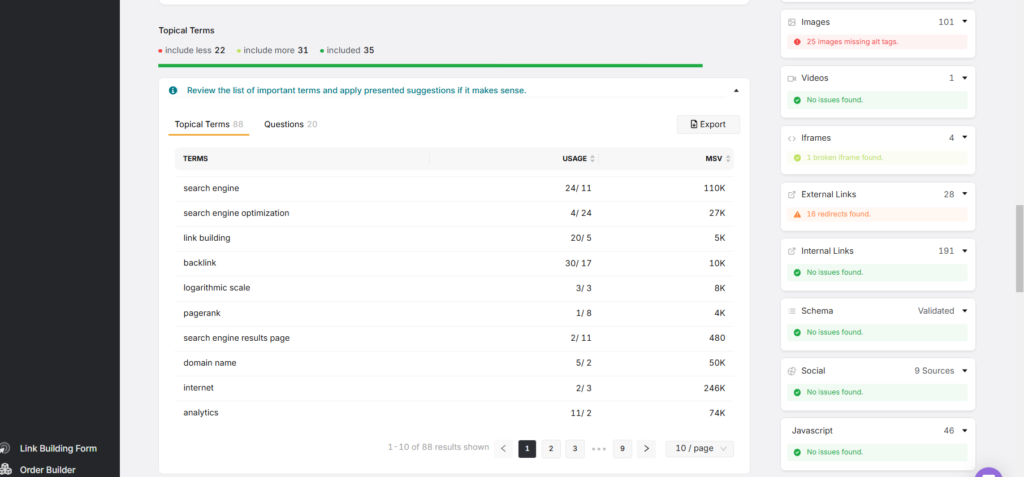
5. AI SEO Tools
AI SEO tools like OTTO can automatically audit your website for missing keywords and suggest which keywords you should use and on which pages. It also finds meta tags, schema markup, and many other issues and fixes them directly from your dashboard.

This is a pretty unique feature, as it automates almost all SEO processes, not just the ones we mentioned.
Forget Density, Assess Your Keywords Like Google
Keyword density is definitely not used the same way as it was several years ago. Instead, search engines now follow a more context-based approach (and we’re all better for it).
Now, you must balance keyword use with search intent, relevance, diversity, and strategic placement. But while the task itself is slightly more complex, the tools you have at your disposal are more sophisticated than ever.
Some go a bit further than others and employ more AI to help you complete your agency goals. Search Atlas is one such tool, offering content editors, topical relevance and mapping tools, on-page and content audit tools, Google’s perspective of your content (with Scholar), and a lot more.
Give these tools a test run. Sign up for a 7-day free trial, and get onboarding calls, tutorials, and a full tour of the platform.


